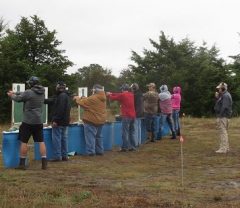by Sandy Keathley
Quiz:
What’s the first thing you do when someone hands you a gun?
- Pull the trigger.
- Aim it out the window at the kid across the street.
- Safety check.
Answer:
3. Safety check.
What if a friend hands it to you?
Safety check.
Your wife/husband/significant other?
Safety check.
You just saw someone check it?
Safety check.
Really??
Safety check. This is not rocket science. Every time you lay your hands on a gun, check it. Trust no one, not even yourself. People make mistakes. If I am going to be hurt with a gun, or hurt someone else, I want it to be on me. How would you feel if you accidentally killed someone because you took someone’s word that a gun was clear?
I was on vacation recently, at my brother’s house. He is a collector of Army Colt .45 revolvers, and he showed me those, and a few other things. As he pulled each gun out of the closet, he checked it, and handed it to me. I checked it again, although I had seen him check it just 8 seconds earlier. I saw him check it, but I didn’t see what he saw. He didn’t think I was being silly or paranoid; he is a gun guy, and he knows how it works. When it comes to guns that might be loaded, trust no one but yourself, ever.
As the politician said,
Who are you going to believe? Me, or your own lying eyes?
